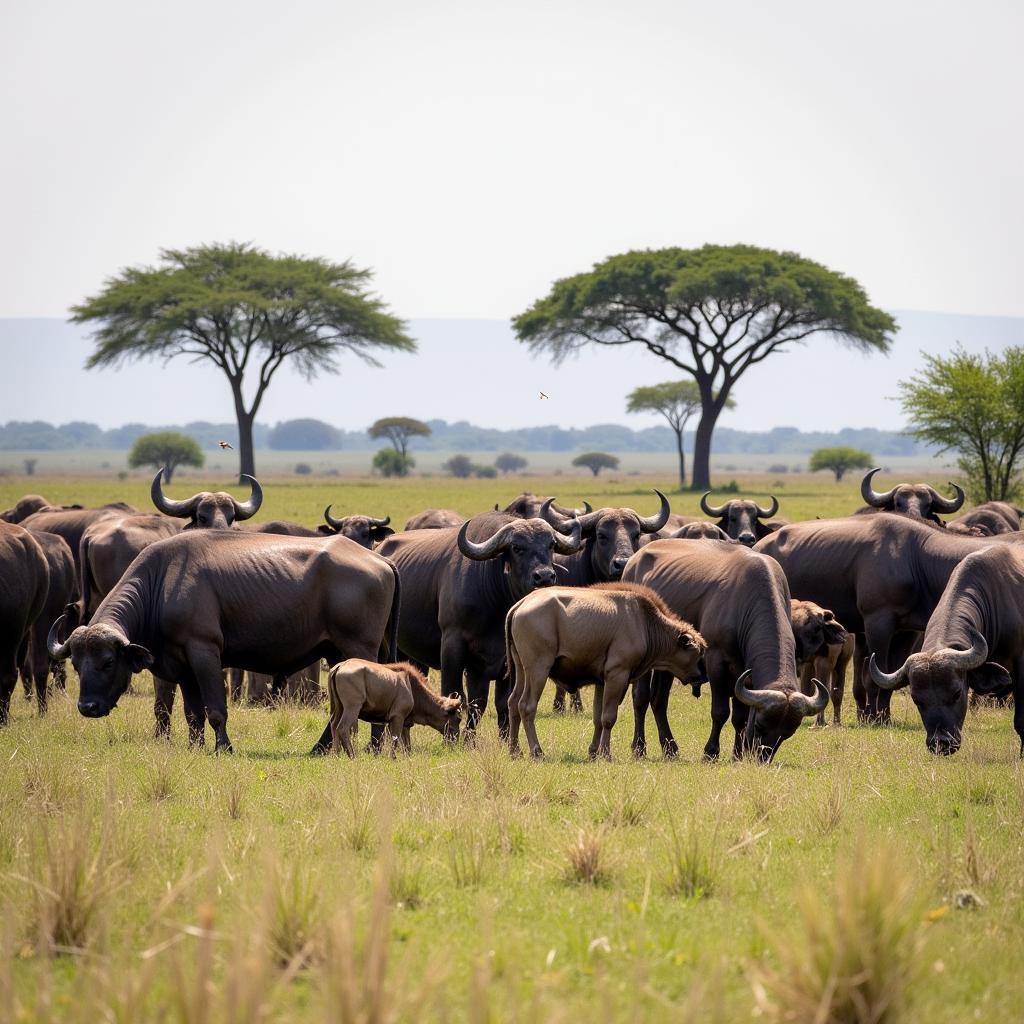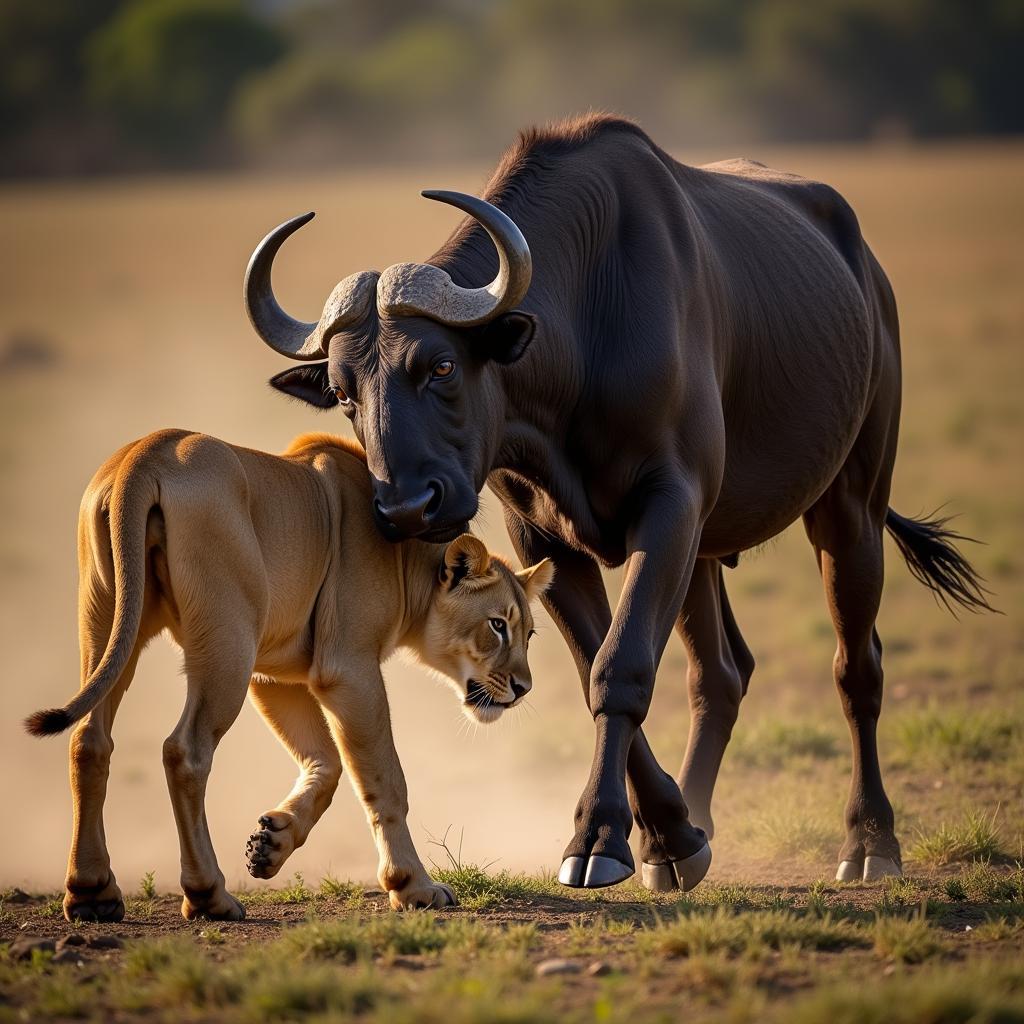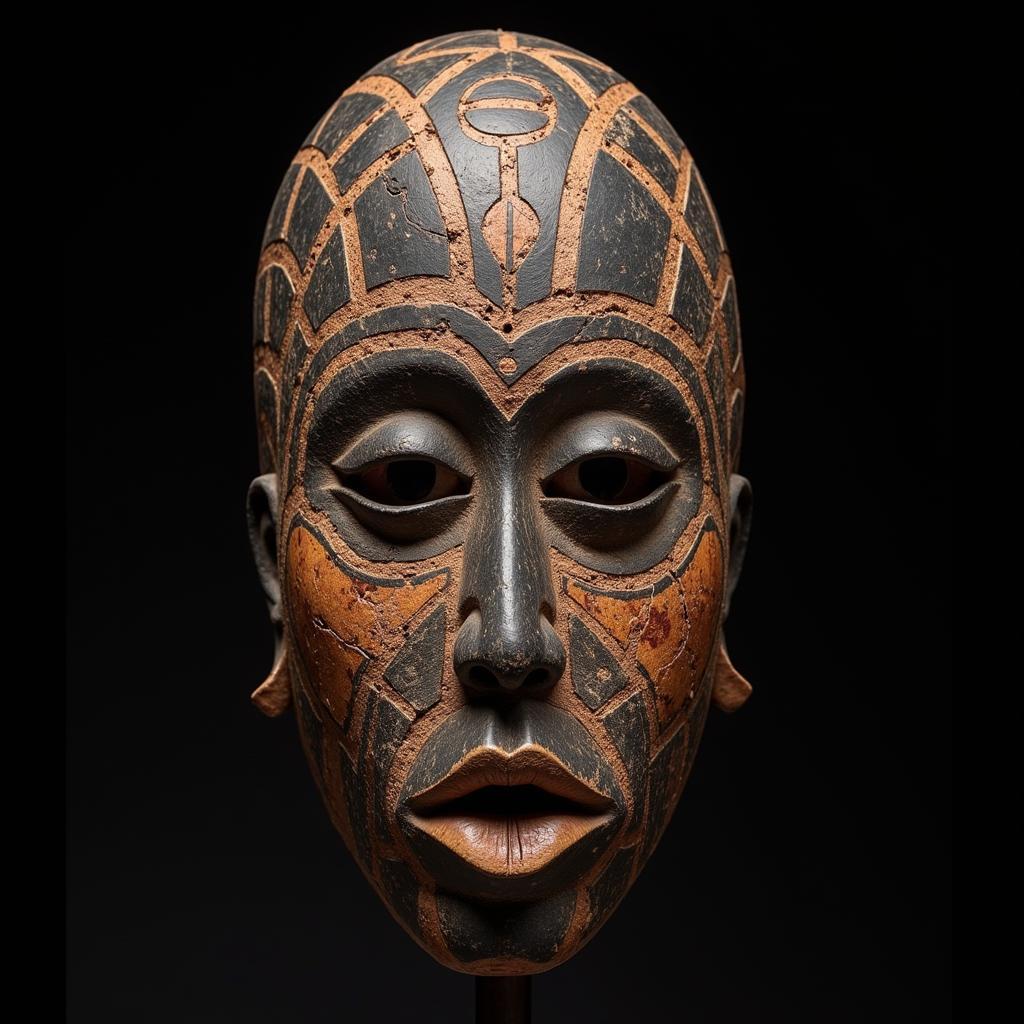The Mighty African Buffalo: A Symbol of Power and Resilience
The African buffalo, a formidable herbivore roaming the savannas and woodlands of Africa, is much more than just a large bovine. This creature plays a crucial role in the ecosystem and holds a significant place in African culture. From their impressive physical characteristics to their complex social structures, African buffaloes are truly fascinating animals.
Unveiling the African Buffalo: Characteristics and Behavior
The African buffalo, scientifically known as Syncerus caffer, is a powerful animal recognized by its thickset body, large horns, and shaggy coat. There are several subspecies, including the Cape buffalo and the forest buffalo, each adapted to their specific environment. The most distinctive feature of the African buffalo is undoubtedly its horns, which form a solid boss over the forehead in mature males. These horns serve as both weapons and status symbols within the herd.
African buffaloes are highly social animals, living in herds that can range from a few dozen to several hundred individuals. These herds are complex social structures with intricate hierarchies and strong bonds between members. They exhibit cooperative behavior, such as defending young calves from predators, and often work together to find food and water.
 African Buffalo Herd Grazing in Savanna
African Buffalo Herd Grazing in Savanna
The African Buffalo’s Role in the Ecosystem
African buffaloes are keystone species in many African ecosystems. Their grazing habits influence vegetation patterns, creating a mosaic of habitats that benefit other species. Their dung provides nutrients for the soil and supports a variety of insects and other invertebrates. They are also an important prey species for large predators like lions, crocodiles, and hyenas.
The relationship between the African buffalo and these predators is a delicate balance. While buffaloes are a vital food source, they are also capable of defending themselves fiercely. Their powerful horns and aggressive nature make them a challenging target, even for the apex predators of the savanna.
 African Buffalo Defending Calf from Lion
African Buffalo Defending Calf from Lion
African Buffalo and Human Interactions
African buffaloes have a long history of interaction with humans. They are a source of meat and hides for some communities, and their horns are sometimes used in traditional crafts. However, they are also considered one of the most dangerous animals in Africa. Their unpredictable nature and tendency to charge when threatened have resulted in numerous human fatalities.
Despite the dangers, many African cultures hold the buffalo in high regard. They are often seen as symbols of strength, resilience, and community. In some traditions, the buffalo is revered as a sacred animal, representing the connection between humans and the natural world.
Is the African Buffalo Endangered?
While not currently considered endangered, certain subspecies of African buffalo face significant threats. Habitat loss due to human encroachment, poaching, and disease outbreaks are all contributing factors to their decline in some regions. Conservation efforts are crucial to ensuring the long-term survival of these magnificent animals.
Conclusion: Appreciating the African Buffalo
The African buffalo is a truly remarkable creature, embodying the wild spirit of the African continent. From their ecological significance to their cultural importance, they deserve our respect and protection. By understanding and appreciating these magnificent animals, we can contribute to their continued survival for generations to come.
FAQs about African Buffaloes
-
What is the average lifespan of an African buffalo? African buffaloes typically live for 15-20 years in the wild.
-
What do African buffaloes eat? They are herbivores, primarily grazing on grasses, but they also consume leaves, fruits, and other vegetation.
-
How large are African buffalo herds? Herd size can vary greatly, ranging from a few dozen individuals to several hundred.
-
Are African buffaloes dangerous to humans? Yes, they are considered one of the most dangerous animals in Africa due to their unpredictable nature and powerful horns.
-
What predators prey on African buffaloes? Lions, crocodiles, hyenas, and leopards are among their primary predators, mainly targeting the young and weak.
-
What are the main threats to African buffalo populations? Habitat loss, poaching, and disease are the major threats facing some buffalo subspecies.
Further Exploration
Explore more fascinating articles on our website about other African wildlife:
- The Majestic Lion: King of the African Savanna
- The Elusive Leopard: A Master of Camouflage
Need assistance or have questions about African wildlife? Contact us at Phone Number: +255768904061, Email: [email protected] or visit us at Mbarali DC Mawindi, Kangaga, Tanzania. We have a 24/7 customer service team.


